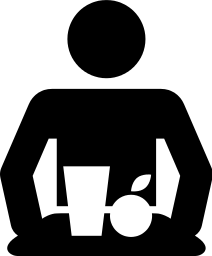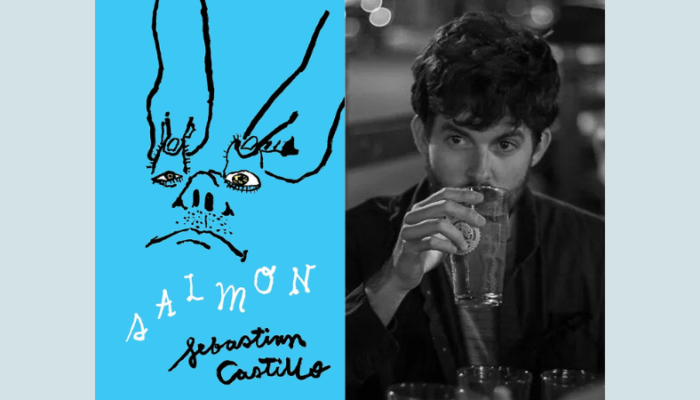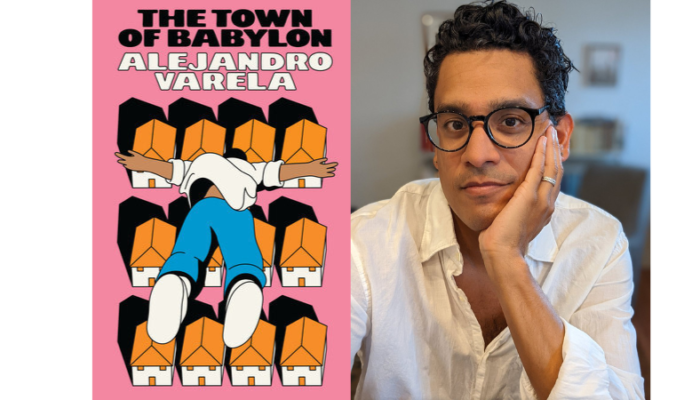There Are No Free Lunches
Kavita Das
On Monday mornings, the final beep would sound over the school intercom at 8:30, signaling that all P.S. 203 students should report to their classrooms. I was in fourth grade with Mrs. Pacman and a video game of the same name was all the rage. Following the final beep, our class, a sea of white, black, brown, and yellow, would stand at our desks and recite the Pledge of Allegiance. We were led by a pledge-leader and a flag bearer, positions that rotated daily.
Afterwards commenced the quiet period. We read to ourselves in our seats and Mrs. Pacman took on the weekly task of sorting out lunch and milk money. This involved a roll call. She called out “Regular Lunch” and all the kids who paid the regular price for lunch formed an L-shaped single line that ran along one side of the classroom and continued along the blackboard leading up to her desk. We clutched envelopes with $2.50 in lunch money in front of us, trying to make sure none of the coins slipped out. Sometimes I didn’t have my lunch money in an envelope because my parents would press bills and coins into my hand as I ran to catch the bus. On these mornings, I rooted around in my pant pockets, laying out my lunch money coin by coin on Mrs. Pacman’s desk. This caused her to stare at me impatiently over the rims of her reading-glasses, held by a colorful beaded chain around her neck.
When the Regular Lunch kids finished turning in their money, Mrs. Pacman called out “Regular Milk” and the same process repeated itself for those children who were just buying milk for the week to drink with their brown bag lunches from home. When they got to Mrs. Pacman’s desk, the Regular Milk kids had to specify “plain” or “chocolate” and hand over their fifty cents in milk money.
Once the Regular Lunch and Regular Milk money had been sorted, Mrs. Pacman called out “Reduced Lunch.” This referred to kids who received their lunch at a reduced price because they couldn’t afford the weekly cost of $2.50. Again the process repeated itself for “Reduced Milk,” chocolate and plain. Finally, after the Reduced Lunch and Milk kids sat down, Mrs. Pacman called out “Free Lunch” and “Free Milk,” referring to those kids whose families could not afford any amount for food or milk. Unlike the rest of us, Free Lunch and Free Milk kids didn’t have to line up because there was no payment to turn in. Mrs. Pacman would ask Free Lunch and Free Milk kids to raise their hands and she jotted their names down on a list that would be sent to Mrs. Honig, our Cafeteria Lady. While not all class pariahs were Free Lunch kids, all Free Lunch kids were generally pariahs.
I cycled back and forth between being a Regular Milk kid, who brought a homemade brown bag lunch, and a Regular Lunch kid. I had started out brown-bagging it but became self-conscious of the strange hybrid lunches my mom packed for me. These brown bag lunches typically included a cheese and cucumber sandwich with spicy Indian pickle smeared inside the top slice of bread and a sweet or savory snack: a small packet of Cheetos, Fritos, or a Twinkie or Hostess Cupcake. While I didn’t mind the sandwich itself, I was embarrassed when classmates would remark on the “funny” smell of the pungent pickle. It made it impossible to engage in the frequent sandwich trades between my classmates:
“I’ll trade you my PBJ for your chicken salad.”
“I’ll trade you my tuna fish for your ham and cheese.”
When I tried to engage, I would either get some serious side eye or a flat out “no.” And I understood why.
Meanwhile, I was intrigued by the exoticness of my classmate’s sandwiches, with the notion that fish could come out of a can and that chicken could be mixed with mayonnaise. But I was most enthralled by the combination of peanut butter and jelly. To me, it was a blessed union between lunch and dessert. On more than a few occasions, I happily traded my whole lunch – milk, sandwich, and a bag of Fritos – for half a PB&J sandwich.
I finally convinced my mom to buy peanut butter and jelly, but it didn’t go as planned. She came home from the grocery store with “Goobers,” a jar pre-filled with a mixture of peanut butter and jelly. “Ewww,” I said as I looked at the jar in disgust, for both the name and the product itself. She was perplexed. “What? You asked for peanut butter and jelly. And I bought peanut butter and jelly.” I refused to let her even open the jar and instead begged her to let me buy lunch at school. From fourth grade onwards, I became a Regular Lunch kid savoring Jamaican beef patties, square pizzas, and crinkle-cut fries.
My primary lunch buddies were Vanessa, a chubby black girl with a big-personality, Kimberly, her lanky sidekick, and Jennifer, an Argentinian girl. Like me, Jennifer had long black hair. Unlike me, Jennifer wore her hair in two long, flowing ponytails. I wore mine in two long braids prompting classmates to tug on them, clap their hands over their mouths, and make whooping noises because they thought I looked like “the other kind of Indian.” I wondered how it was possible that I could be ridiculed simultaneously for my “smelly” curried food and my long black braids. Then again, I didn’t make things easier for myself by telling my friends about the time my mother took me to audition for a Land O’ Lakes Butter commercial.
Karen, a new white girl, joined our fourth grade class in the middle of fall. Karen followed me to our section of the lunch table merely because I had responded when she said “hello” to me that morning in class. She spoke with a certain formality that belied her slovenly appearance and the fact that she often wore the same clothes for days. Vanessa gave me a sideways look when Karen followed me to our table – a look that said, “Why did you go and bring this girl to our table?”
Some of us emptied the contents of our brown bags while others returned with trays of food from the lunch line. We commenced our tradition of comparing lunches and engaging in high-level trade negotiations. Meanwhile, Karen had no food in front of her. She scanned all our lunches in an odd and discomfiting manner.
As soon as one of us complained about one of our food items, limp green beans or bruised fruit or soggy hamburger buns or smooshed sandwiches, Karen immediately asked, “If you’re not going to eat that, can I have it?” Perplexed, we nodded. Before we could reconsider, she would scoop up the offending food item and quickly scarf it down. Eventually, however, Karen began expressing envy for our food, whether or not we complained. We found ourselves rushing to eat our food as soon as we sat down, averting our eyes from Karen’s gaze.
Vanessa, our unofficial table captain, soon had enough of this. She asked Karen, “How come you don’t have your own lunch? Why’re you always tryin’ to eat ours?” Karen looked down at her hands on the table, her nails had been chewed to well below her fingertips. “My mom says we can’t spare anything for lunch,” she said. “We have to save everything for dinner.” Shocked expressions registered across all our faces and I felt a pang of guilt. Vanessa persisted, “But I don’t understand, why don’t you get a school lunch? You can get it Reduced or Free. Lots of people do.” Karen shrunk in her seat and gave what seemed like a canned response. “My parents said we’re not ‘those kind of people.’ We don’t take hand outs.” Vanessa, a Regular Lunch kid, was never at a loss for words, but now was dumfounded. “That’s crazy,” Vanessa said huffily. The rest of us began to fidget with our food, uncomfortable with the confrontation. After a moment of silence, Vanessa said resolutely, “You can’t have my burger but you can have my boiled carrots.” She unfolded her napkin and emptied her boiled carrots onto it. Kimberly and I added ours to the pile and handed the damp napkin to Karen. Meanwhile, Jennifer, a brownbag kid, slid her tiny box of Sunmaid raisins across the table. “Oh wow, thanks you guys!” Karen said and began relishing the anemic boiled carrot slices one at a time. When she was done with the mound of carrots, she rubbed her hands together, opened the tiny box of Sunmaid raisins, and said, “and now, dessert.”
A year ago, a dead worm fell out of a classmate’s patty. Since then, I only ate the buns and the side of fries, leaving behind the limp boiled vegetables and suspicious patty. Today, I found myself eating the entire thing. The patty, buns, ketchup, and mustard swirled perfectly together in my mouth – it was no peanut butter and jelly, but I was grateful. At the end of the lunch hour, I noticed my tablemates’ plates were as clean as mine.
A few weeks before Thanksgiving approached, Karen began licking her lips and talking eagerly about the turkey her Mom would be making, as if just the thought of it could sustain her until then. We would listen to her daily litany about the planned turkey even as we piled our cast off food items onto a napkin for her.
Thanksgiving came and went. The following Monday morning, Karen sprinted down the hallway to catch up to me and I asked her, “So, did you get your turkey?” “Yes,” she said. “And it was the most delicious turkey ever.”
As we walked down the long hallway to our classroom, she proceeded to tell me about the turkey in great detail. How they drove one hour to get a bargain turkey. How her mother painstakingly prepared it. How it had been torture for her to wait all day for it to cook. She closed her eyes and hugged herself as she talked about how the turkey tasted.
When she finally opened her eyes, she said, “I just wish it was already next Thanksgiving.” I rolled my eyes, but I wasn’t sure if I was more embarrassed by her earnest vulnerability or my ambivalence. For me, Thanksgiving was an unremarkable holiday filled with chicken curry and family shopping trips, while for Karen it was indeed a day to give thanks.
Karen stayed through the school year but she didn’t return in the fall for fifth grade. I had once made the mistake of asking her where she was from and she spent an entire lunch period reciting a long list of states and cities that her family had cycled through. When Thanksgiving rolled around, my Mom proudly presented her latest hybrid recipes she had created for the holiday: cranberry pickle and pumpkin and chickpea stew. These dishes would become our family’s tradition, one that I grew to look forward to. But that Thanksgiving, as we passed around these unsettling new foods, I thought of turkey and wondered if, wherever she was, Karen was eating some.
 KAVITA DAS has worked in the social change sector for 15 years on issues ranging from homelessness to health disparities, and most recently, racial justice. She is now a freelance writer focusing on social change, culture, feminism, and their intersection, and is working on a biography about Grammy-nominated Hindustani singer Lakshmi Shankar, to be published by Harper Collins India. Kavita lives in New York City with her husband and their beloved hound, Gavin.
KAVITA DAS has worked in the social change sector for 15 years on issues ranging from homelessness to health disparities, and most recently, racial justice. She is now a freelance writer focusing on social change, culture, feminism, and their intersection, and is working on a biography about Grammy-nominated Hindustani singer Lakshmi Shankar, to be published by Harper Collins India. Kavita lives in New York City with her husband and their beloved hound, Gavin.




